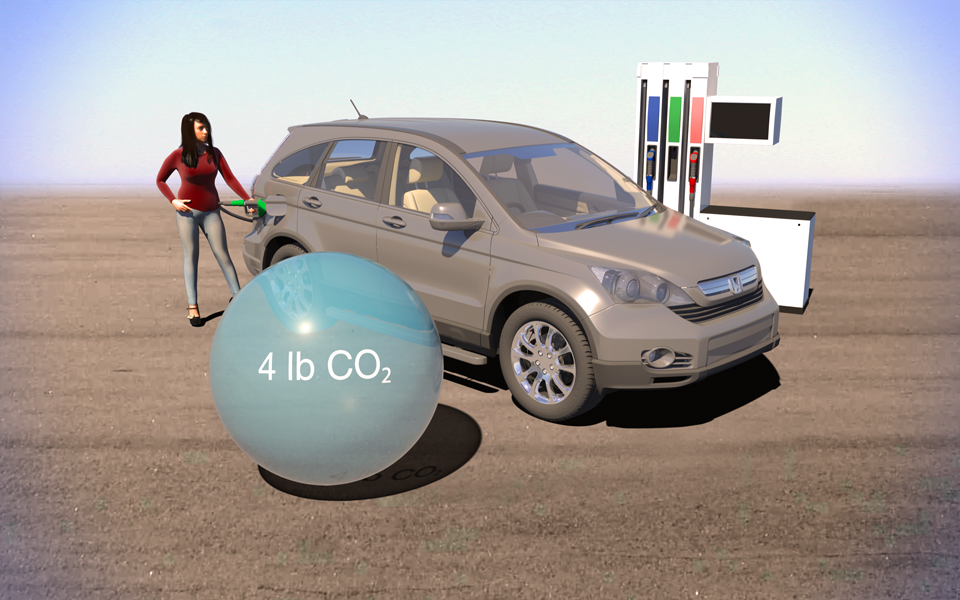CLIENT
Environmental Defense Fund
PURPOSE
To explain the difference between gasoline from tar-sands and regular gasoline in terms everyone can relate to.
DESCRIPTION
Image set showing the overall increase in emissions from tar-sands gasoline above the US average, at scales from a gallon of gasoline to a year.
The Environmental Defense Fund asked us to explain the difference between gasoline from tar-sands and regular gasoline in terms everyone can relate to. We compared them in terms of a single gallon of gas and a typical car's annual emissions.
Making sense of the numbers on a large scale is not easy, but the simple numerical argument in our pictures leaves viewers with a sense of scale for the additional impact from Canadian tar-sands.
Extracting and processing tar-sands oil is 81% more carbon intensive than average oil in the US. The emissions from burning the gasoline is the same. The overall emissions from tar-sands gasoline (well to pump emissions plus pump to wheel emissions) are 17% higher than the US average. This means that each gallon of gasoline derived from Canadian tar-sands adds an additional 4 lb (1.8 kg) of CO2 to the atmosphere.
Four pounds (4 lb) of carbon dioxide gas would fill a sphere 4 feet across (123 cm). As the average American car gets through 535 gallons of gasoline a year, that equates to a pile of CO2 bubbles 27 feet high (8.3 metres).
Click here for more information.



